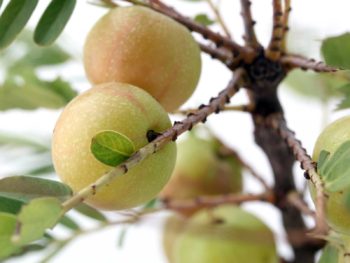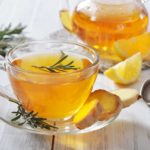By Gina Mastroluca
Pitta is one of the three mind/body constitutions in the holistic healing science of Ayurveda. Pitta means to heat or transform and is a biological combination of fire and water. We all have some Pitta energy in us! Understanding the fundamental principles of Pitta will help us to get to know ourselves more deeply. We can learn what to include and what to let go of as we create a healthy, balanced, and meaningful life.
Pitta is the energy of transformation in the body; it governs digestion, assimilation, appetite, body temperature, metabolism, immunity, and hormonal balance. Mentally and emotionally, Pitta allows us to determine the thoughts, relationships, emotions and environments that are supportive and nourishing and that which are toxic. A healthy system can integrate the nourishing and let go of the toxic.
Pitta Qualities and Tendencies
Pitta energy tends to be perceptive, active, expressive, intelligent, articulate, and ambitious. A Pitta person can be visionary, focused, clear, determined, organized, rational, systematic, driven, precise, extreme, opinionated, controlled, righteous, intense, warm, joyous, playful and humorous.
How can we identify when there is too much heat or Pitta in the mind?
With too much Pitta in the mind there is a tendency to suppress emotional feelings and expression. This often shows itself as irritability, frustration, blaming, judging, and holding oneself to a very high standard. One can have an underlying fear of not being perfect and feel unloved or unrecognized. This can lead to low self-esteem, a pervasive feeling of not being good enough, and fear of criticism.
A person with high Pitta can be demanding of others and more so of themselves. This may cause paralysis or an unwillingness to try anything for fear of not being good enough. There can be anxiety and debilitating depression. One can feel angry that life is not perfect and that they are not perfect. Heat in the mind may manifest as anxiety about getting things right, obsessive thinking and compulsiveness. These negative and critical thoughts burn ojas— our natural immunity and joie de vie.
Physical Manifestations of Pitta Imbalance:
A person may have overly-acidic blood, inflammation, rashes, acne, skin problems, digestive problems, eating problems, hot flashes, chronic infection, bronchitis, gastritis, colitis, sinusitis, headaches, anxiety, allergies, addictions, insomnia, and low energy.
What Contributes to Excess Pitta?
- Hot weather, getting overheated, dampness
- Suppression of emotions and self-expression: anger, jealousy and unresolved emotions and experiences
- Pungent, sour, salty foods
- Coffee
- Iced drinks
- Senses overloaded with too much stimulation–too much reading, TV, computer or activity, particularly at night
- Going to bed late (past 10)
- Inflammatory situations, such as arguments and frustrating activities
- Perfectionism—being too hard on one’s self
- Bright light
- Too much intense exercise and activity
- Over-work, over-commitment and/or an overly competitive environment
Pitta people are most vulnerable to aggravation between the hours of 10pm-2 am and 10am-2 pm. Pitta energy is most active in those between 18-50 years of age.

Balancing Pitta Heat:
To begin to balance Pitta, it is essential to consider lifestyle, foods, herbs, emotions, thoughts, beliefs, relationships, and exercise.
A transformational spiritual practice for Pitta is beginning to accept ourselves as we are. We can experiment with gentleness, humor and compassion for ourselves and others. Time for play, renewal and noticing what we are grateful for cools and nurtures Pitta mind.
Mindfulness Meditation is transformative and helps to release suppressed emotions, repetitive thought patterns and bring peace of mind.
- Self-massage with coconut, brahmi or sunflower oil is nourishing and calming.
- Sandalwood and rose essential oil lifts the spirit and is balancing for a restless, agitated mind.
- Counseling and bodywork bring the healing medicine of support and touch
- Balance of doing and non doing
- Intentionally having space between activities
- Being in cool areas, by water
- Soft words, music, uncompetitive activities
- Chanting and singing
- Avoid direct sunlight in the heat of the day and seek out moonlight.
- Avoid exposure to fumes and chemicals
- Seek out pleasant, sweet company
The stomach and small intestine are the center of Pitta in the body. It can be very effective to clear heat through purgation with gentle cleansers such as triphala, psyllium seed, flax husk, dandelion root, castor oil, mango juice, raisins and prunes.
Aloe vera juice clears heat from blood, liver and stomach—up to 2 Tbsp 3 times a day with a pinch or turmeric for general tonic. Can mix with organic apple juice. Take cool or at room temp–not cold.
Monitor your results for a few weeks.
FOOD Tips for Reducing Pitta:
Eat at regular times and in a calm and settled environment
Avoid or reduce– spicy, sour, and salty
Coffee, raw onions, garlic, salsa, tomatoes, orange juice, fermented foods, yogurt, sauerkraut, grapefruit, wine and alcohol, white sugar, artificial sweeteners and preservatives, black pepper, cheese, pasta, red meat, soy, oily and fried foods
Emphasize sweet, bitter and astringent
Sweet: grains- rice, oats, barley, wheat
Oatmeal w/coconut or rice milk (oats are cooling and anti-inflammatory)
Chicken, turkey, eggs, fish, shrimp
Nuts, pumpkin and sunflower seeds.
Nuts assimilate best to be ground or soaked and not salted
Almond, rice, coconut milk
Sweet potatoes, root vegetables, zucchini
Sweet fruits: pears bananas, melons, peaches, plums, papaya, mango, figs, and dates
Bitter: radicchio, lettuce, cucumbers, chamomile, dandelion
Astringent: apples, cabbage, collards, kale, broccoli, cauliflower, asparagus, honey, rose
Eat at regular times with fruit snacking in between meals
Warm Foods easy to digest and cooling
Coconut water
Ghee (in moderation and replacing butter)
Warm, cool or room temp water– no ice— a bit of lime before meal
Cooling Herbs and Teas: fennel, lemon balm, mint, lemongrass, fenugreek, coriander, cilantro, cardamom, cumin, turmeric, rose, lavender, and chamomile.
Balancing Digestion: See Agni article
Exercise for Pitta
Favor walking, biking, swimming
Gentle yoga:
Cooling forward bends, moon salutation, the child, spinal twists
Left nostril (Lunar) breathing: inhale thru the left and exhale through the right
Brahmari breath, shetali breath
Enjoy getting to know your Pitta dimensions! You could consult a practitioner trained in Ayurveda for more in depth information and support tailored to your specific constitutional needs.
© 2009 Gina Mastroluca













 What is Polarity Therapy? An interview with Gina Mastroluca
What is Polarity Therapy? An interview with Gina Mastroluca





